What Is a Distribution Transformer? Structure, Function, and How It Works in the Power Grid?
Have you ever wondered how the high-voltage electricity from power plants safely reaches your home? The answer lies in a crucial device that often goes unnoticed. But what exactly is this unsung hero of our power grid?
A distribution transformer is an electrical device that converts medium-voltage electricity (typically 6kV to 33kV) into lower voltages (230V or 400V) for end-user applications. It serves as the final link between the utility grid and consumers, stepping down voltage levels to make them safe and usable for homes, businesses, and industries. Distribution transformers are essential components in power networks, enabling efficient and safe electricity delivery to millions of users.
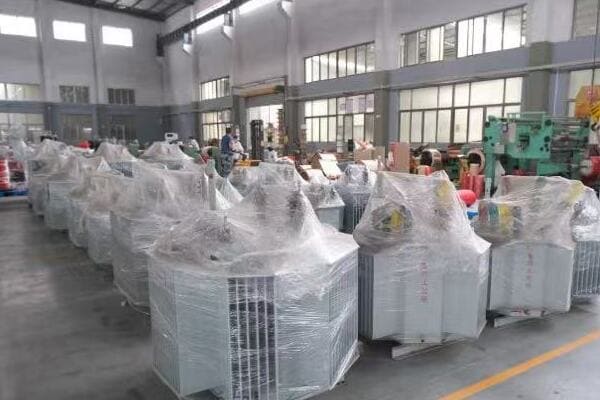
In this comprehensive guide, I’ll take you through the structure, function, and operation of distribution transformers in the power grid. Whether you’re an engineer, project manager, or simply curious about how electricity reaches your doorstep, this article will provide valuable insights into these critical components of our electrical infrastructure.
What Is a Distribution Transformer?
Have you ever noticed those barrel-shaped devices mounted on poles or in green boxes near your neighborhood? These are likely distribution transformers, but what exactly do they do, and why are they so important for our daily power needs?
A distribution transformer is a type of electrical transformer designed to convert medium-voltage electricity from the power grid (typically 6kV to 33kV) into lower voltages (usually 230V or 400V) suitable for end-user consumption. It acts as the final step in the electrical distribution system, providing the crucial link between the utility’s distribution network and the consumer’s service entrance. Distribution transformers come in various forms, including oil-filled, dry-type, pole-mounted, and pad-mounted configurations, each suited for specific installation environments and load requirements.
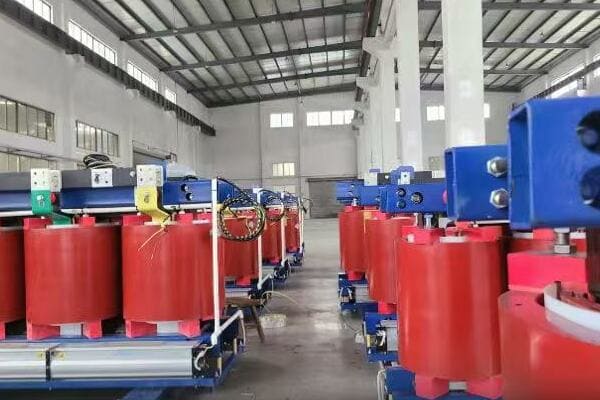
Key Aspects of Distribution Transformers
Let’s break down the main features:
- Purpose and Function
- Types of Distribution Transformers
- Position in the Power Grid
- Voltage and Capacity Ranges
- Key Design Considerations
Purpose and Function
The primary role in power distribution:
- Step down medium voltage to low voltage for end-user consumption
- Provide electrical isolation between primary and secondary circuits
- Enable efficient power distribution over wide areas
I recently visited a new residential development where distribution transformers were being installed. It was fascinating to see how these devices, no larger than a small car, could power entire blocks of homes.
Types of Distribution Transformers
Adapting to various installation environments:
- Oil-filled transformers: Common for outdoor installations
- Dry-type transformers: Preferred for indoor or environmentally sensitive areas
- Pole-mounted transformers: Used in overhead distribution systems
- Pad-mounted transformers: Installed at ground level, often in urban areas
During a recent project, we had to choose between oil-filled and dry-type transformers for a new commercial complex. The decision process highlighted the importance of understanding each type’s strengths and limitations.
Position in the Power Grid
Bridging the gap between utility and consumer:
- Located at the end of the distribution network
- Typically the last transformer before consumer connection
- Often found in residential areas, commercial zones, and industrial parks
Here’s a simplified view of a distribution transformer’s position:
| Grid Component | Voltage Level | Next Step |
|---|---|---|
| Transmission Lines | 69kV – 765kV | Substation Transformer |
| Distribution Lines | 4kV – 34.5kV | Distribution Transformer |
| Consumer Supply | 120V – 480V | End-User Equipment |
Voltage and Capacity Ranges
Meeting diverse power needs:
- Primary voltages: Typically 6kV, 11kV, 22kV, or 33kV
- Secondary voltages: Usually 230V (single-phase) or 400V (three-phase)
- Capacity ranges from 5 kVA to 2500 kVA for most distribution applications
Key Design Considerations
Ensuring reliability and efficiency:
- Cooling methods (oil or air)
- Insulation systems
- Efficiency and losses
- Environmental factors (temperature, humidity, pollution)
Key points about distribution transformers:
- They are crucial for stepping down voltage to usable levels
- Come in various types to suit different installation environments
- Serve as the final link between the power grid and consumers
- Handle a wide range of voltages and capacities
- Design must balance efficiency, reliability, and environmental factors
In my experience, understanding these basic aspects of distribution transformers is crucial for effective power system planning. I recall a project where we underestimated the growth potential of a new commercial area. By choosing transformers with slightly higher capacity and the ability to add forced cooling later, we were able to accommodate the area’s rapid expansion without major infrastructure changes.
For example, in a recent rural electrification project, we used a combination of pole-mounted and pad-mounted distribution transformers. This approach allowed us to efficiently cover a wide area with varying population densities, showcasing the versatility of different transformer types in real-world applications.
As we move on to discuss the internal structure of distribution transformers, keep these basic characteristics in mind. Understanding how the external design relates to the internal components will give you a more comprehensive view of how these essential devices function in our power distribution systems.
Internal Structure of a Distribution Transformer: Core, Windings, Insulation?
Have you ever wondered what’s inside those mysterious boxes or cylinders that bring electricity to your neighborhood? The internal structure of a distribution transformer is a marvel of electrical engineering. But what are the key components that make up this structure, and how do they work together to transform voltage?
The internal structure of a distribution transformer consists of three main components: the core, windings, and insulation system. The core, typically made of laminated silicon steel, provides a path for magnetic flux. The windings, usually copper or aluminum, consist of primary (high-voltage) and secondary (low-voltage) coils wrapped around the core. The insulation system, which may be oil or solid materials like epoxy resin, provides electrical isolation and cooling. This arrangement allows for efficient voltage transformation while maintaining electrical isolation between primary and secondary circuits.
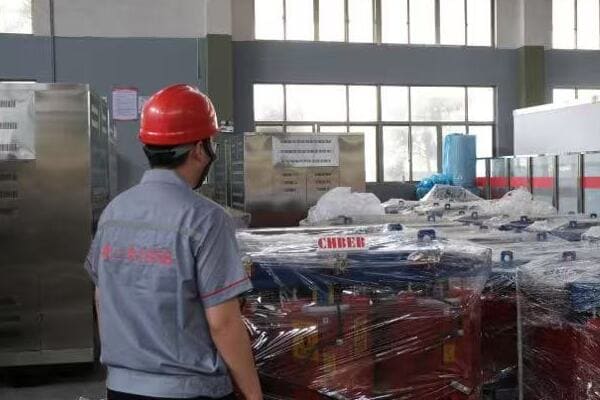
Key Internal Components of Distribution Transformers
Let’s examine the main internal elements:
- Core Structure and Materials
- Primary and Secondary Windings
- Insulation Systems
- Tap Changers
- Structural Components and Tank
Core Structure and Materials
The magnetic heart of the transformer:
- Typically made of grain-oriented silicon steel laminations
- Designed to provide a low-reluctance path for magnetic flux
- Common shapes include shell-type or core-type configurations
I recently had the opportunity to inspect a disassembled distribution transformer. The precision in the core’s lamination assembly was impressive, showcasing how crucial this component is for efficient operation.
Primary and Secondary Windings
Conducting the electrical magic:
- Primary (high-voltage) winding connected to the distribution line
- Secondary (low-voltage) winding delivers power to consumers
- Usually made of copper for better conductivity, though aluminum is sometimes used
During a factory tour, I observed the winding process for distribution transformers. The skill required to achieve the precise number of turns and maintain proper insulation between layers was remarkable.
Insulation Systems
Protecting and cooling the vital components:
- Oil-filled transformers: Mineral oil surrounds core and windings
- Dry-type transformers: Solid insulation materials like epoxy resin
- Hybrid systems combining solid and liquid insulation
Here’s a quick comparison of insulation types:
| Insulation Type | Advantages | Typical Applications |
|---|---|---|
| Oil | Excellent cooling, self-healing | Outdoor, high capacity |
| Epoxy Resin | Fire resistant, environmentally friendly | Indoor, urban areas |
| Hybrid | Combines benefits of both | Special applications |
Tap Changers
Adjusting voltage ratios:
- Allow for minor voltage adjustments to compensate for line voltage variations
- Can be on-load or off-load type
- Critical for maintaining stable output voltage
Structural Components and Tank
Housing and supporting the internal elements:
- Tank or enclosure protects internal components
- Cooling fins or radiators for heat dissipation
- Bushings for external connections
- Monitoring and protection devices
Key points about the internal structure:
- The core provides a path for magnetic flux, crucial for voltage transformation
- Windings transform voltage through electromagnetic induction
- Insulation systems provide both electrical isolation and cooling
- Tap changers allow for voltage adjustment to maintain output stability
- Structural components protect and support the internal elements
In my experience, understanding the internal structure is crucial for troubleshooting and maintenance. I recall a case where a transformer was experiencing unusual heating. By understanding the internal layout, we quickly identified that the issue was related to a partial blockage in the oil circulation path, not a winding problem as initially suspected.
For example, in a recent project involving transformers for a coastal area, we specified special materials for the internal components to resist corrosion from salt air. This attention to the internal structure based on environmental factors significantly extended the expected lifespan of the units.
As we move on to discuss how distribution transformers work in the power grid, keep these internal components in mind. Understanding how they interact is key to grasping the overall function and efficiency of these essential devices in our power distribution systems.
How a Distribution Transformer Works in the Power Grid?
Have you ever wondered how electricity from a distant power plant safely reaches your home at the right voltage? The journey involves several steps, but distribution transformers play a crucial role in the final stage. But how exactly do these devices function within the larger power grid?
A distribution transformer works by stepping down medium voltage electricity from the power grid to lower voltages suitable for end-users. It receives power from distribution lines (typically 6kV to 33kV) and converts it to 230V or 400V for residential and commercial use. The transformer is positioned at the end of the distribution network, often serving as the last voltage transformation point before consumer connection. It operates continuously, adjusting to load variations and maintaining a relatively constant output voltage through its design and sometimes with the help of tap changers.
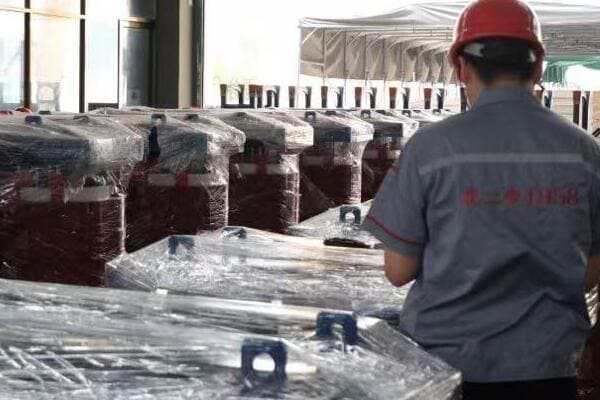
Key Aspects of Distribution Transformer Operation
Let’s break down how these transformers function in the grid:
- Position in the Power Distribution Chain
- Voltage Transformation Process
- Load Management and Efficiency
- Protection and Safety Features
- Integration with Smart Grid Systems
Position in the Power Distribution Chain
The final link in power delivery:
- Receives power from medium-voltage distribution lines
- Typically located near end-users (neighborhoods, commercial areas)
- Serves as the interface between utility infrastructure and consumer systems
I recently toured a local substation and followed the power flow to nearby neighborhoods. It was fascinating to see how distribution transformers acted as the crucial transition point, making grid power usable for homes and businesses.
Voltage Transformation Process
Converting grid power to consumer-friendly voltages:
- Primary winding receives medium voltage (e.g., 11kV)
- Magnetic field in the core induces voltage in secondary winding
- Secondary winding outputs lower voltage (e.g., 230V/400V)
During a recent project, we used simulation software to demonstrate this process to stakeholders. Visualizing the electromagnetic interactions really helped clarify how these transformers achieve voltage conversion without direct electrical connections.
Load Management and Efficiency
Adapting to varying power demands:
- Designed to handle daily load fluctuations
- Efficiency typically ranges from 95% to 99%
- May include tap changers for voltage regulation
Here’s a simplified view of load management:
| Time of Day | Typical Load | Transformer Response |
|---|---|---|
| Night | Low | Minimal losses, stable voltage |
| Morning/Evening | Peak | Increased current, slight voltage drop |
| Midday | Medium | Balanced operation, optimal efficiency |
Protection and Safety Features
Ensuring reliable and safe operation:
- Fuses or circuit breakers on the primary side
- Surge arresters for lightning protection
- Thermal monitoring to prevent overheating
- Pressure relief devices in oil-filled units
Integration with Smart Grid Systems
Adapting to modern power management:
- Some units equipped with sensors for real-time monitoring
- Data communication capabilities for grid management
- Potential for remote control and diagnostics
Key points about how distribution transformers work in the grid:
- They serve as the final voltage step-down point in the distribution network
- Transform medium voltage to low voltage through electromagnetic induction
- Must manage varying loads while maintaining efficiency
- Incorporate various protection features for safe operation
- Increasingly integrated with smart grid technologies
In my experience, understanding how distribution transformers function in the context of the larger grid is crucial for effective power system planning and management. I recall a project where we were troubleshooting frequent voltage fluctuations in a residential area. By analyzing the transformer’s position and load patterns, we discovered that the issue was related to an undersized unit struggling with peak demands. This insight led to a targeted upgrade that resolved the problem.
For example, in a recent smart city project, we implemented distribution transformers with advanced monitoring capabilities. These units provided real-time data on load patterns, efficiency, and potential issues, allowing for proactive maintenance and more efficient power distribution across the urban area.
As we move on to discuss common voltage and capacity ratings for distribution transformers, keep in mind how these devices operate within the power grid. Understanding their function and limitations is key to selecting the right transformer for specific applications and ensuring reliable power delivery to end-users.
Common Voltage and Capacity Ratings for Distribution Transformers?
Are you finding it challenging to determine the right specifications for distribution transformers in your project? You’re not alone. Many engineers and project managers struggle with selecting the appropriate voltage and capacity ratings. But what are the standard ratings, and how do they align with different applications?
Distribution transformers typically have primary voltage ratings of 6kV, 11kV, 22kV, or 33kV, with secondary voltages of 230V (single-phase) or 400V (three-phase). Common capacity ratings range from 25kVA to 2500kVA, with popular sizes including 50kVA, 100kVA, 250kVA, 500kVA, and 1000kVA. The choice of rating depends on factors like the number of consumers served, type of load (residential, commercial, or industrial), expected load growth, and local power system standards. Larger capacities and higher primary voltages are generally used for denser urban areas or industrial applications.
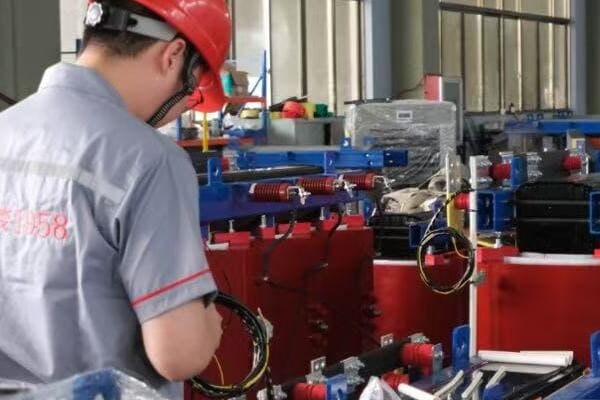
Understanding Distribution Transformer Ratings
Let’s explore the key aspects of transformer ratings:
- Primary Voltage Ratings
- Secondary Voltage Ratings
- Capacity (kVA) Ratings
- Selecting the Right Rating
- Regional Variations and Standards
Primary Voltage Ratings
Common input voltages from the distribution network:
- 6kV: Used in some older urban networks
- 11kV: Very common, especially in residential and light commercial areas
- 22kV: Increasingly used for better power quality and reduced losses
- 33kV: Often used for larger loads or longer distance distribution
I recently worked on a project upgrading an old 6kV network to 11kV. The improvement in power quality and reduction in distribution losses was significant, showcasing the importance of choosing the right primary voltage.
Secondary Voltage Ratings
Output voltages for end-user consumption:
- 230V: Single-phase supply for residential and small commercial use
- 400V: Three-phase supply for larger commercial and industrial applications
During a recent commercial development project, we had to carefully consider the mix of single-phase and three-phase loads to determine the optimal secondary voltage configuration.
Capacity (kVA) Ratings
Power handling capabilities:
- Common ratings: 25kVA, 50kVA, 100kVA, 250kVA, 500kVA, 1000kVA, 2500kVA
- Selection based on total connected load and diversity factor
Here’s a quick guide to typical applications for different capacities:
| Capacity (kVA) | Typical Application |
|---|---|
| 25-50 | Small residential areas, individual large homes |
| 100-250 | Apartment buildings, small commercial complexes |
| 500-1000 | Large commercial areas, small industrial facilities |
| 1500-2500 | Industrial zones, large shopping centers |
Selecting the Right Rating
Factors influencing rating selection:
- Number and type of consumers served
- Expected load growth over 5-10 years
- Peak demand and load factor considerations
- Environmental factors (temperature, altitude)
Regional Variations and Standards
Adapting to local requirements:
- Voltage standards vary by country and region
- Some areas prefer specific capacity increments
- Local utility requirements may influence choices
Key points about distribution transformer ratings:
- Primary voltages typically range from 6kV to 33kV
- Secondary voltages are usually 230V or 400V
- Capacity ratings commonly range from 25kVA to 2500kVA
- Proper rating selection is crucial for efficient and reliable operation
- Regional standards and utility requirements must be considered
In my experience, selecting the right transformer rating is a balance between current needs and future growth. I recall a project where we initially specified a 500kVA transformer for a new commercial development. After analyzing potential growth and considering the cost of future upgrades, we opted for a 750kVA unit. This decision proved wise when the area experienced rapid growth, and the transformer could handle the increased load without replacement.
For example, in a recent rural electrification project, we used a mix of 50kVA and 100kVA transformers. The smaller units were perfect for remote areas with fewer connections, while the larger ones served denser village centers. This approach allowed us to optimize cost and efficiency across the entire project area.
As we move on to discuss applications of distribution transformers, keep these rating considerations in mind. Understanding where and why different ratings are used will help you make more informed decisions in your power distribution projects.
Applications: Where and Why Distribution Transformers Are Used?
Have you ever wondered about the diverse scenarios where distribution transformers play a crucial role? From bustling urban centers to remote rural areas, these devices are essential for powering our world. But what are the specific applications, and why are distribution transformers chosen for these tasks?
Distribution transformers are widely used in urban power grids, rural electrification projects, industrial facilities, commercial complexes, and renewable energy installations. They’re essential in residential areas for powering homes, in shopping centers and office buildings for commercial loads, and in factories for industrial equipment. In rural settings, they enable electrification of remote villages. For renewable energy, they help integrate solar and wind power into the grid. Distribution transformers are chosen for their ability to efficiently step down voltage to usable levels, their reliability, and their adaptability to various environmental conditions.
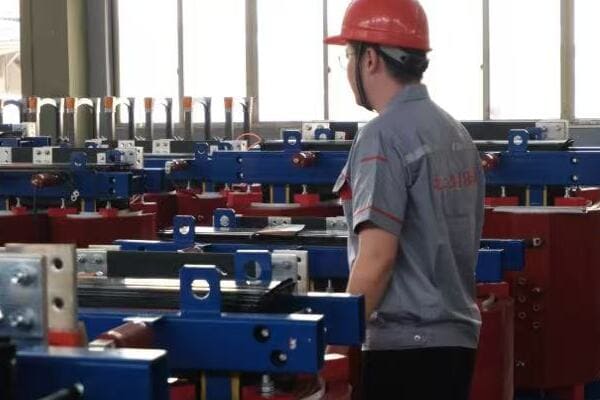
Key Application Areas for Distribution Transformers
Let’s explore the main uses:
- Urban Power Distribution
- Rural Electrification
- Industrial and Commercial Applications
- Renewable Energy Integration
- Specialized Applications
Urban Power Distribution
Powering cities and suburbs:
- Residential areas: Supplying power to homes and apartment complexes
- Commercial districts: Powering shops, offices, and public buildings
- Public infrastructure: Street lighting, traffic signals, and municipal facilities
I recently worked on a project to upgrade the power distribution in a rapidly growing urban area. We strategically placed pad-mounted transformers throughout the neighborhood, balancing aesthetics with the need for increased power capacity.
Rural Electrification
Bringing power to remote areas:
- Village electrification: Providing basic power needs to rural communities
- Agricultural applications: Powering irrigation systems and farm equipment
- Remote facilities: Supplying electricity to schools, clinics, and community centers
During a rural electrification project in a developing country, we used a combination of pole-mounted and small pad-mounted transformers. This flexible approach allowed us to adapt to varying terrain and population densities effectively.
Industrial and Commercial Applications
Meeting diverse power needs:
- Factories: Supplying power for heavy machinery and production lines
- Shopping centers: Providing electricity for lighting, HVAC, and retail operations
- Office complexes: Powering computers, elevators, and building systems
Here’s a quick overview of typical transformer sizes for different applications:
| Application | Typical Transformer Size | Key Considerations |
|---|---|---|
| Small Factory | 500-1000 kVA | High starting currents, continuous operation |
| Shopping Mall | 1000-2500 kVA | Peak load during business hours, HVAC demands |
| Office Building | 500-1500 kVA | Daily load fluctuations, energy efficiency |
Renewable Energy Integration
Supporting green energy initiatives:
- Solar farms: Stepping up voltage from inverters for grid connection
- Wind turbines: Adapting variable output for grid compatibility
- Microgrids: Balancing diverse energy sources and storage systems
Specialized Applications
Addressing unique power distribution challenges:
- Temporary power: Construction sites, events, disaster relief
- Mobile substations: Emergency power restoration, temporary capacity increase
- Marine applications: Shipboard power systems, offshore platforms
Key points about distribution transformer applications:
- They are crucial in both urban and rural power distribution
- Industrial and commercial applications require careful sizing and protection
- Renewable energy integration is a growing application area
- Specialized uses demonstrate the versatility of these transformers
- Environmental factors often influence transformer selection and design
In my experience, understanding the specific application is crucial for selecting the right transformer. I recall a project for a new data center where we initially considered standard commercial transformers. However, after analyzing the unique load profile and reliability requirements, we opted for specially designed K-rated transformers to handle the high harmonic content typical in data center loads.
For example, in a recent solar farm project, we used multiple smaller transformers instead of a few large ones. This approach not only provided better redundancy but also allowed for more flexible power management as the solar output varied throughout the day.
As we conclude our exploration of distribution transformer applications, it’s clear that these devices are integral to our modern power infrastructure. Whether powering homes, businesses, or cutting-edge renewable energy projects, distribution transformers play a vital role in ensuring reliable and efficient electricity delivery.
Top 10 Distribution Transformer Manufacturers in China (Export Focus)?
Are you looking for reliable suppliers of distribution transformers for your international projects? With China being a major player in the global electrical equipment market, it’s worth exploring the top manufacturers from this region. But which Chinese companies stand out in producing high-quality, export-ready distribution transformers?
Leading Chinese manufacturers of distribution transformers with a strong export focus include CHBEB, CHINT, TBEA, XD Group, and Sieyuan Electric. These companies offer a range of transformers with voltage ratings from 6kV to 66kV and capacities from 25kVA to 5000kVA. They are known for their adherence to international standards like IEC and ANSI, competitive pricing, and strong export capabilities. Many of these manufacturers provide customization options, comprehensive documentation, and after-sales support, making them popular choices for international projects in regions like Africa, Southeast Asia, and along the Belt and Road initiative countries.

Overview of Top Chinese Distribution Transformer Manufacturers
Let’s examine the key players and their offerings:
- CHBEB (China Bei Er Bian)
- CHINT
- TBEA
- XD Group
- Sieyuan Electric
CHBEB (China Bei Er Bian)
Specializing in customized solutions:
- Voltage Range: 6-33kV
- Capacity Range: 25-2500 kVA
- Key Features: High protection grade designs (IP54-IP65), customization capabilities
- Export Markets: Middle East, Africa, Latin America
I recently visited CHBEB’s manufacturing facility and was impressed by their rigorous testing procedures for export-grade transformers. Their ability to customize units for specific environmental conditions, like high-temperature or high-humidity areas, sets them apart in the international market.
CHINT
Known for reliability and cost-effectiveness:
- Voltage Range: 6.6-20kV
- Capacity Range: 50-2500 kVA
- Key Features: Comprehensive product line, fast delivery, competitive pricing
- Export Markets: Southeast Asia, Africa
During a recent project in Southeast Asia, we sourced transformers from CHINT. Their ability to deliver a large quantity of standardized units quickly was crucial for meeting our tight project timeline.
TBEA
High-end transformer solutions:
- Voltage Range: 10-66kV
- Capacity Range: 100-3150 kVA
- Key Features: Experience in national grid projects, support for ultra-high voltage products
- Export Markets: Central Asia, Belt & Road countries
Here’s a comparison of these top manufacturers:
| Manufacturer | Voltage Range | Capacity Range | Key Strength | Main Export Regions |
|---|---|---|---|---|
| CHBEB | 6-33kV | 25-2500 kVA | Customization | Middle East, Africa |
| CHINT | 6.6-20kV | 50-2500 kVA | Cost-effective | Southeast Asia, Africa |
| TBEA | 10-66kV | 100-3150 kVA | High-end solutions | Central Asia, Belt & Road |
| XD Group | 35-110kV | 630-5000 kVA | EPC projects | Global |
| Sieyuan | 10-33kV | 100-2500 kVA | GIS integration | Latin America, Africa |
XD Group
Comprehensive power equipment manufacturer:
- Voltage Range: 35-110kV
- Capacity Range: 630-5000 kVA
- Key Features: Suitable for high-end substation projects, EPC capabilities
- Export Markets: Global presence in major infrastructure projects
Sieyuan Electric
Integrated power solutions provider:
- Voltage Range: 10-33kV
- Capacity Range: 100-2500 kVA
- Key Features: GIS system integration, smart grid solutions
- Export Markets: Latin America, Africa
Key points about Chinese distribution transformer manufacturers:
- They offer a wide range of voltage and capacity options
- Many provide customization capabilities for specific project needs
- Strong focus on international standards compliance for export markets
- Competitive pricing combined with reliable quality
- Extensive experience in various global markets
In my experience, these Chinese manufacturers have consistently demonstrated their ability to meet diverse project requirements. I recall a large-scale rural electrification project in Africa where we sourced transformers from multiple Chinese manufacturers on this list. By leveraging the specific strengths of each company – such as CHBEB’s customization capabilities for harsh environments and CHINT’s cost-effective standard units for widespread deployment – we were able to optimize the overall power distribution system while managing costs effectively.
For example, in a recent project in a remote area with unstable grid voltage, we utilized TBEA’s transformers known for their robust design and voltage regulation capabilities. This choice significantly improved power quality and reliability in the challenging operating environment.
When considering Chinese manufacturers for your distribution transformer needs, it’s crucial to evaluate not just the technical specifications and pricing, but also factors like after-sales support, documentation quality, and the manufacturer’s experience in your specific application area. This comprehensive approach will help ensure you select the right partner for your power distribution projects.
FAQs: Common Questions About Distribution Transformers?
Are you still puzzled by some aspects of distribution transformers? You’re not alone. Many professionals and curious individuals have questions about these essential components of our power distribution system. Let’s address some of the most frequently asked questions to deepen your understanding.
FAQs about distribution transformers often cover their function, differences from other transformer types, standard voltages, and installation considerations. Distribution transformers primarily function to step down medium voltage to low voltage for end-user consumption. They differ from power transformers in size, capacity, and voltage levels handled. Standard primary voltages include 11kV and 22kV, with secondary voltages typically at 230V/400V. Installation varies based on type (pole-mounted, pad-mounted, etc.) and local regulations, but generally requires proper clearances, protection devices, and grounding. Understanding these aspects is crucial for proper selection, installation, and maintenance of distribution transformers.

Frequently Asked Questions About Distribution Transformers
Let’s address some common queries:
- Function and Purpose
- Differences from Other Transformer Types
- Standard Voltages and Capacities
- Installation and Maintenance
- Efficiency and Lifespan
Function and Purpose
Q: What is the main function of a distribution transformer?
A: The primary function of a distribution transformer is to step down medium voltage electricity from the distribution network (typically 6kV to 33kV) to lower voltages (usually 230V or 400V) suitable for end-user consumption in homes, businesses, and light industrial applications.
I often use an analogy to explain this: think of the distribution transformer as a voltage "adapter" that makes the high-power electricity from the grid usable for your everyday devices, much like how a travel adapter allows you to use your electronics in different countries.
Differences from Other Transformer Types
Q: How does a distribution transformer differ from a power transformer?
A: The main differences include:
- Size and Capacity: Distribution transformers are generally smaller and have lower capacity ratings.
- Voltage Levels: Power transformers handle higher voltages, often in transmission networks.
- Location: Distribution transformers are located closer to end-users.
- Design Focus: Distribution transformers prioritize cost-effectiveness and reliability for widespread deployment.
During a recent educational workshop, we compared a small distribution transformer with a model of a large power transformer. The contrast in size and complexity was striking, helping participants understand the distinct roles these transformers play in the power system.
Standard Voltages and Capacities
Q: What are typical voltage and capacity ratings for distribution transformers?
A: Common ratings include:
| Primary Voltage | Secondary Voltage | Typical Capacities |
|---|---|---|
| 11kV | 230V/400V | 50, 100, 250, 500 kVA |
| 22kV | 230V/400V | 100, 250, 500, 1000 kVA |
| 33kV | 230V/400V | 250, 500, 1000, 1500 kVA |
These ratings can vary based on specific regional standards and requirements.
Installation and Maintenance
Q: What are key considerations for installing and maintaining distribution transformers?
A: Important factors include:
- Proper clearances and accessibility
- Protection devices (fuses, surge arresters)
- Regular oil testing for oil-filled units
- Periodic inspection of bushings and connections
- Monitoring of load patterns and efficiency
I recently oversaw the installation of several distribution transformers in a new suburban development. The precision required in positioning and connecting these units, especially considering safety clearances and future maintenance access, was impressive.
Efficiency and Lifespan
Q: How efficient are distribution transformers and how long do they last?
A: Modern distribution transformers typically have efficiency ratings between 97% and 99%. With proper maintenance, they can last 20-30 years or more. Factors affecting lifespan include:
- Quality of materials and construction
- Loading patterns
- Environmental conditions
- Maintenance practices
Key points from these FAQs:
- Distribution transformers primarily step down voltage for end-user consumption
- They differ from power transformers in size, capacity, and application
- Standard voltages and capacities vary but typically range from 11kV to 33kV primary
- Proper installation and maintenance are crucial for longevity and efficiency
- Modern units are highly efficient and can have a long lifespan with proper care
In my experience, understanding these fundamental aspects is crucial for anyone involved in power distribution projects. I recall a situation where a maintenance team’s thorough understanding of transformer characteristics and typical failure modes helped them quickly diagnose and resolve an issue, minimizing downtime for an entire neighborhood.
For example, during a recent rural electrification project, we used these FAQs as a basis for training local technicians. This knowledge empowered them to perform basic maintenance and troubleshooting, greatly improving the long-term sustainability of the power distribution system.
Remember, while these FAQs provide a good overview, always consult manufacturer specifications and local regulations for detailed information specific to your situation. Continuous learning and staying updated on the latest developments in transformer technology are key to effectively managing and maintaining these crucial components of our power infrastructure.
Conclusion
Distribution transformers are vital components in our power distribution systems, efficiently stepping down medium voltage to levels suitable for end-user consumption. Understanding their structure, function, and applications is crucial for effective power system design and management. From urban grids to rural electrification projects, these transformers play a key role in delivering reliable electricity. As technology advances, distribution transformers continue to evolve, adapting to new challenges in our ever-growing and changing power needs.
Recent Post
Quick Message
Request A free quote
We'd like to work with you
- +86 15558785111
- chbebgroup@chbebpower.com
- +86 15558785111
What We Do
CHINA BEI ER BIAN (CHBEB) GROUP, with 218 million in registered capital, originated from Beijing Beierbian Transformer Group. Headquartered in Beijing for R&D, it operates major production bases in Nanjing and Yueqing, producing high-quality products.
Latest Post
Latest Product
Contact Us
- +86 15558785111
- chbebgroup@chbebpower.com
- +86 15558785111
BeiJing
No 3,RongJing East Road,BeiJing Economic Technological Development Area,BeiJing,China
JiangSu
No 7️Xiangfeng Road,Jiangning,NanJing,JiangSu,China
WenZhou
No.211, Wei 16 Road, Industrial Zone, Yueqing, Wenzhou, Zhejiang, China.
XiangYang Industrial Zone ,YueQing,WenZhou,ZheJiang,China

